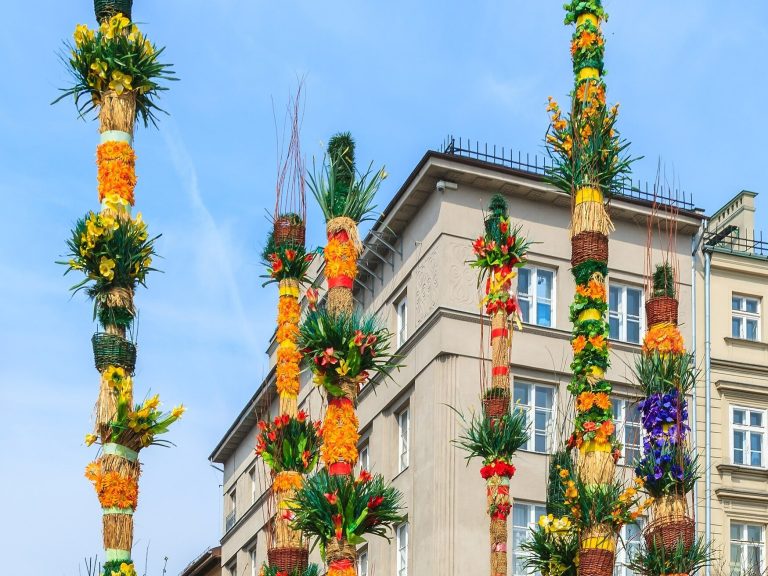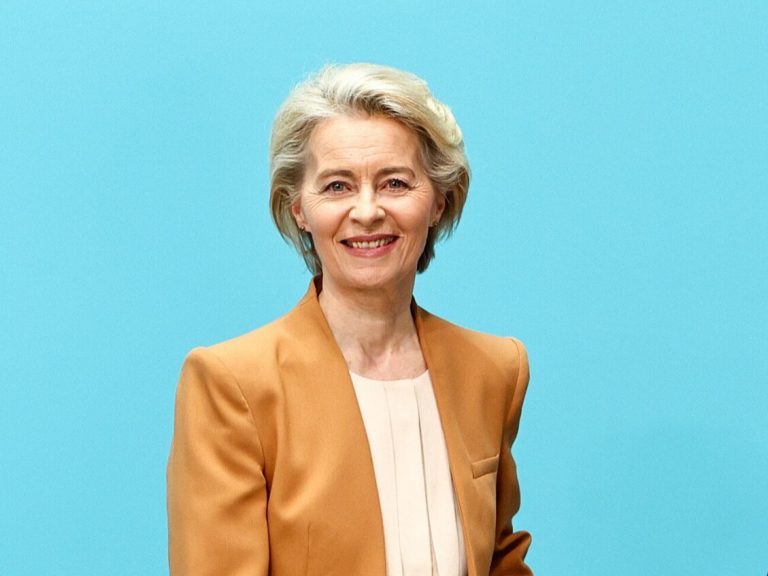A city that arouses extreme emotions. Fast flights from Poland for less than PLN 400

It does not have a typical old town and too many monuments, because they were destroyed during numerous wars. However, it has its own atmosphere. The capital of Serbia – Belgrade – is becoming more and more popular among tourists every year, not only for city breaks, but also for longer stays. Poles also discovered the charm of this city that never sleeps. It’s worth seeing them because there are daily flights from Warsaw and a return ticket costs less than PLN 400.
Belgrade, the capital of Serbia and the capital of the former Yugoslavia, arouses very extreme emotions among tourists. Some are delighted with the authenticity of the city, its history and the still small influx of foreign tourists compared to other Balkan countries, e.g. neighboring Croatia. However, there are people who point out that the city is a communist behemoth, a slum or beggars on the streets. No matter what we think, it is worth seeing Belgrade with your own eyes and forming your own opinion about it.
Mild climate, fast and cheap travel
Due to its relatively mild climate, Belgrade is an attractive travel destination all year round. In spring and summer you can enjoy its lush parks, riverside beaches and numerous festivals. Autumn is the perfect time to visit museums and monuments, or walk along the banks of the Danube and Sava. Winter, on the other hand, is the time for Christmas fairs and visiting various cafes and restaurants. The city experiences the greatest onslaught of tourists from May to September, when the weather is the most stable and warm. The average summer temperature is around 25-30 degrees Celsius, which is favorable for sightseeing and enjoying outdoor attractions. Autumn and winter in Belgrade are usually cold, but still warmer than in Poland. Only from December to February the temperature drops a few lines below zero. Rainfall is most common in May and June, while winter is usually dry with occasional snowfall.
You can fly to Belgrade from Gdańsk or Warsaw. Ticket prices booked in advance cost PLN 400 both ways. There is also a bus to the capital of Serbia from Warsaw, but the price of tickets is similar to air tickets and the travel time differs significantly (by plane – 1.5 hours, by bus – 21 hours).
You can rent a hotel on site: prices in four-star facilities are approximately PLN 300-400 per room per day with breakfast. Apartments are cheaper: you have to pay about PLN 200 per night for two people. You can also take advantage of the wide offer of hostels: here you can buy accommodation for even less than PLN 100 per day.
City of contradictions
Belgrade is a city full of contradictions: historic buildings from the Austro-Hungarian era mix here with communist behemoths and modern, even futuristic buildings.
Without a doubt, one of the most important symbols of Belgrade is the Kalemegdan Fortress, which towers over the city. Here there is an ideal viewpoint of the mouth of the Sava and the Danube. The fortress witnessed the centuries-long history of the city, which passed through the hands of various empires and nations. It should be remembered that Belgrade is one of the oldest European capitals, and research shows that settlements took place here 7,000 years ago.
Belgrade is also known for its dynamic cultural scene. The city is home to many museums, galleries and theaters that showcase both local and international art and culture. It is worth mentioning the Museum of Contemporary Art, the Nikola Tesla Museum and the National Museum of Serbia.
The city is also famous for its intense nightlife. Belgrade is often called one of the best cities in the world for party lovers. River barge clubs, called splavovi, are particularly popular and attract locals and tourists alike.
Tradition, modernity and war
The Skadarlija district is the quintessence of bohemian Belgrade, a place that seems constantly bustling with life thanks to its abundance of colors, flavors and sounds. This street, often compared to the famous Montmartre in Paris, is the cultural and gastronomic heart of the city. The cafes, restaurants and bars located here are full of local specialties and exotic flavors, and the walls of old tenement houses tell the stories of past centuries. Skadarlija is not only a place where you can eat well and cheaply, but above all, here you can feel the soul of Belgrade. Local galleries and handicraft shops offer a wide range of works by local artists: from traditional ceramics, through paintings, to modern installations. Concerts, shows and festivals are often organized here, attracting both residents and tourists.
Republika Square, also known as “Kod konja” (“At the horse”), is a place that combines culture, history and modernity. The square is one of the most popular meeting points for residents, but also a key point on the tourist trail around the city. Tours, as well as evening meetings and parties, usually start and end here. In the square there is a monument to Prince Mihail Obrenović, a prominent Serbian ruler. Important cultural institutions are located around: the National Museum of Serbia, which stores over 400,000 exhibits, including works of art from prehistoric times to the 20th century, and the National Theater, where theater, opera and ballet performances take place.
Republika Square is also a place where history meets modernity: glass buildings are often added to historic tenement houses. Near the square is Knez Mihailova, the most important shopping street in Belgrade, full of shops, cafes and restaurants. It’s the perfect place for a walk and shopping.
While in Belgrade, it is worth visiting the Cathedral of Saint Sava. It is one of the most recognizable symbols not only of the city, but of the entire country. It is the largest Orthodox temple in Serbia and one of the largest in the world, and its lofty domes are breathtaking. The cathedral is a powerful testament to the richness and durability of Serbian religious heritage. The temple, built on the Vracar hill, dominates the city’s skyline, attracting the attention of tourists. Inside the cathedral there is an equally impressive interior dripping with gold. Large frescoes, beautiful mosaics and golden decorations create an unforgettable image.
It is also worth walking to the building of the Ministry of Defense, which was bombed in 1999. The precision of the shots is really impressive and you can see exactly where the bullets hit the building. It’s true that these missiles were different, because they were even so “accurate” that during the bombing one hit the Chinese embassy. Back then it was said to be a coincidence. Today, the bombed building is omitted in guidebooks, and quite wrongly so. The building of the Ministry of National Defense was bombed by NATO during Operation Allied Force, which lasted 78 days. The aim of the airstrikes was to stop the armed conflict in Kosovo. This war left numerous traces, both politically and socially. The Serbs never rebuilt the bombed building and left it in such a state as a memory and warning so that such conflicts would never occur again.
On the other bank of the Danube there is one of the oldest parts of the city, which for a long time functioned as an independent city. It is a district of contrasts, where luxurious houses of wealthy Serbs are adjacent to cottages dating back to the 18th century. While there, it is worth going to the Zemunu Tradition Museum, where you can trace the history of the district.
Kafanas and restaurant life in Belgrade
Even though Serbia is still in the phase of reconstruction and catching up after the war, which lasted almost until the end of the 1990s, in terms of restaurants and pubs, it is not behind the rest of Europe, and maybe even ahead of it. Moreover, the prices are still not excessive. The most popular are kafanas, places where live music is played every evening. You can’t even enter some of them, but people stand in the doorway to sing together.
“Kafana” is one of the most important institutions in Serbia. It’s a kind of traditional tavern. Locals say that for Serbs it is the real epicenter of society. A few hundred years ago, wars ended in kafanas, and on paper handkerchiefs, in a slightly intoxicated mood, many poets wrote their most romantic songs. According to local novels, many of them are still played in restaurants today. A group of musicians with guitars, double basses or violins comes to each table and makes the evening more enjoyable. Sometimes, three or four bands play on different stages in one restaurant.
One of the Belgrade attractions that tourists most often visit is a small cafe with the unusual name “?”. Originally, the place was to be called “Cathedral Cafe”. This, however, met with protest from church dignitaries. Until the dispute is resolved, the owner hung a question mark above the entrance door. The mysterious and slightly intriguing name was so well received that it stuck to this place permanently. At the same time, it is the oldest restaurant in the city.
It is also worth visiting the Moskwa hotel and its café. It is a meeting place for Belgrade residents, especially beautiful ladies who come here for coffee and cake. It used to be the most prestigious location, employing the most exquisite confectioners. Now the splendor of this place may have dimmed a bit, but birthdays, engagements and other important life moments are still celebrated here. On weekends you have to wait in line to get a seat.
Clubbing enthusiasts will also be pleased. You can dance and sing basically anywhere. There are also several famous clubs in the city where world-famous DJs play. It is often said that Belgrade never sleeps, because some parties end when people go to work.






